Honey bees nested in our chimney for over a year
- Published
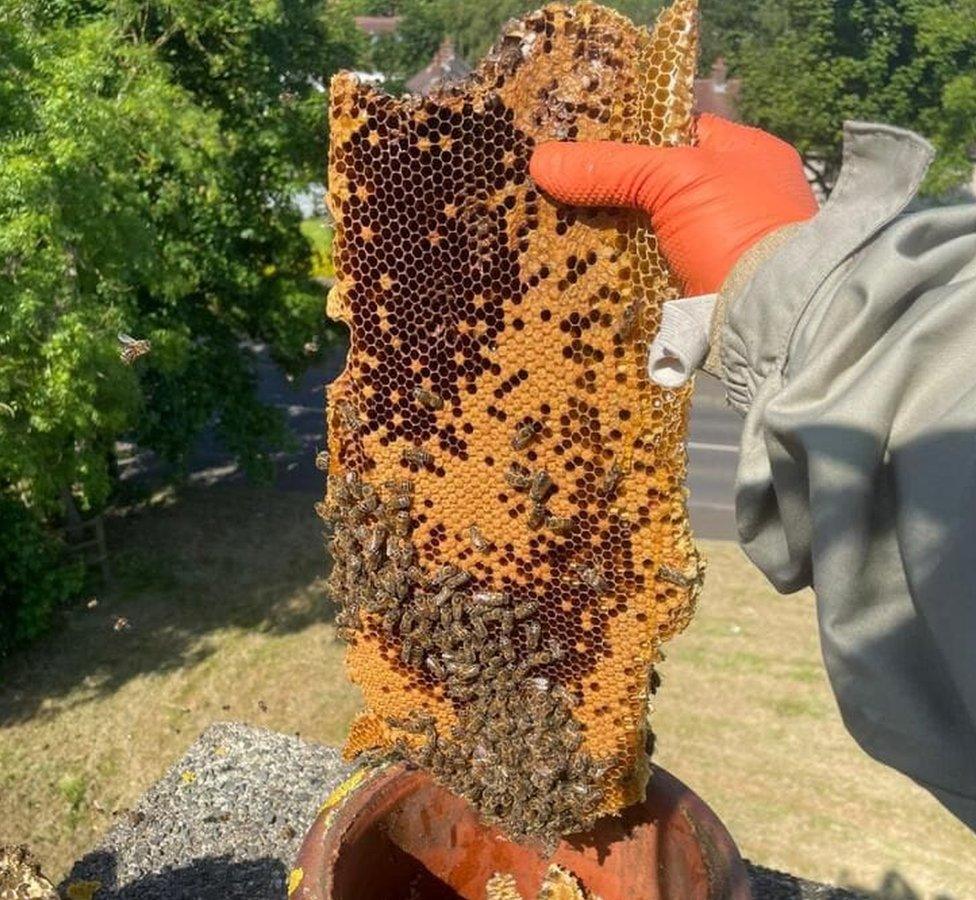
The huge comb removed from Paula Denvir's chimney
Paula Denvir thought there was a swarm of wasps in her parents' house last July and was told they would go away when the weather got colder.
Fast forward a year, and those 'wasps' were actually honey bees that had set up a nest in a boarded-up chimney of the County Down house she now lives in with her husband.
The honeycomb they created was massive. It had to be broken up into pieces so it - and the bees - could be removed from the chimney.
"My husband had been out for walk a few weeks ago and returned and opened the door to the office-come-bedroom," she told BBC News NI.
"There were about 100 bees. And they were just all around the floor, curtains and window, and it was like, 'Quick - close the door again'.
"We went outside. We could see in a disused chimney at the gable end of the house, that they were amassed up around there, a really big number [of bees]. The next part was trying to get some help."

Paula Denvir said she could appreciate how a swarm would cause a lot of stress
One beekeeper told BBC News NI that there had been a tenfold increase in the number of phone calls he had taken from frantic householders.
And the BBC has heard of similar stories.
The British Beekeepers Association said that in summer they get many calls from people about bees in homes, outbuildings and gardens - but they are only able to help in the case of honey bees.
Beekeeper Stephen Kelly said the insects only need a tiny gap to get into a house.
"The chimney is probably the most common place," he said. Also the gaps in between tiles, underneath fascia boards, flat roofs, under gutter lanes around soffits and on peaked rooves," he said. Basically anywhere they can get in.
"Chimneys are an ideal environment for them. The flue is in there and the cap provides shelter from the elements. It's just as close to natural as they can get."
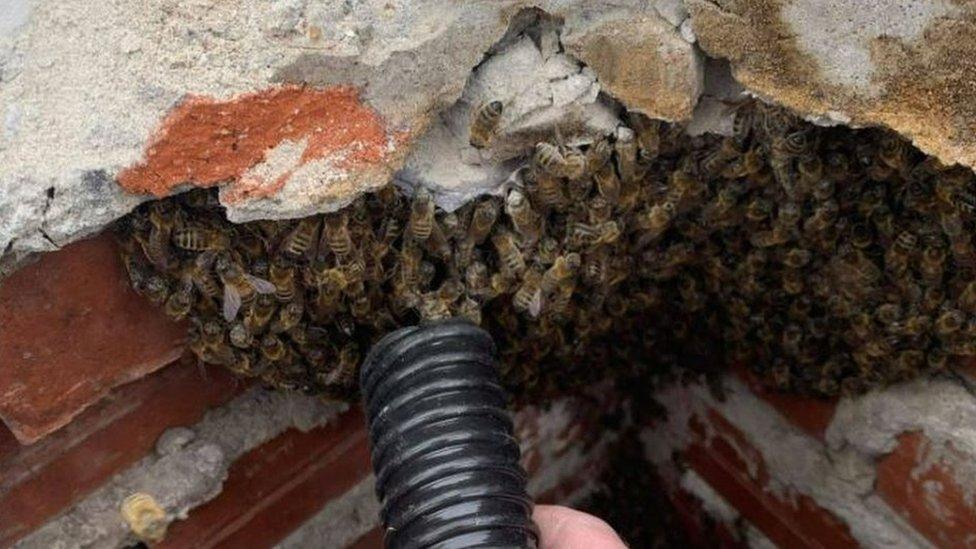
One way of removing bees from part of a structure is by using a simple vacuum
Paula Denvir said although the bees in her home were not aggressive, a swarm was the last thing she needed.
"You could see them outside the property, on the chimney at the top of it and if you came into the house, it was in that one bedroom.
"It was very stressful as we had a lot of family coming to our home.

The chimney at Paula Denvir's house was inspected to find the exact location of the insects
"There was an immediate sort of panic. What's happening? What are we gonna do?
"I just immediately started phoning around and googling for help."
She concedes that although the bees weren't aggressive, they were a scary sight.
"I could really start to appreciate how somebody would be very, very stressed, especially with young children," she said.

Busy bees
There are about 250 species of bee in the UK - only one is the honey bee.
Swarming is a natural process. It is the colony reproducing by the old queen leaving with some of the bees.
Most swarms occur on warm sunny days from May to the end of July.
Source: British Beekeepers Association

Stephen Kelly said this year was his busiest in the past five years.
"For the last three to four weeks [I was] on the phone every day," he said, "talking to people who had nests in their homes."

Stephen Kelly has been having a really busy summer to date
How do you get them out?
A bumble bee's nest will naturally die out but honey bees' get bigger - and so does the honeycomb - and that makes them harder to evict.
A survey is done to locate the insects and the honeycomb and establish if part of a home - often a roof - needs to be opened up.
Mr Kelly, who has about 50 hives in Newcastle, County Down, quite literally uses a vacuum cleaner during the process.
"The bee vacuum that we use; they'll be sucked into it and there's no harm done to them. They are then left in a holding box."
The bees are then taken away, and placed on a site away from other bees to try to prevent any disease transmission.
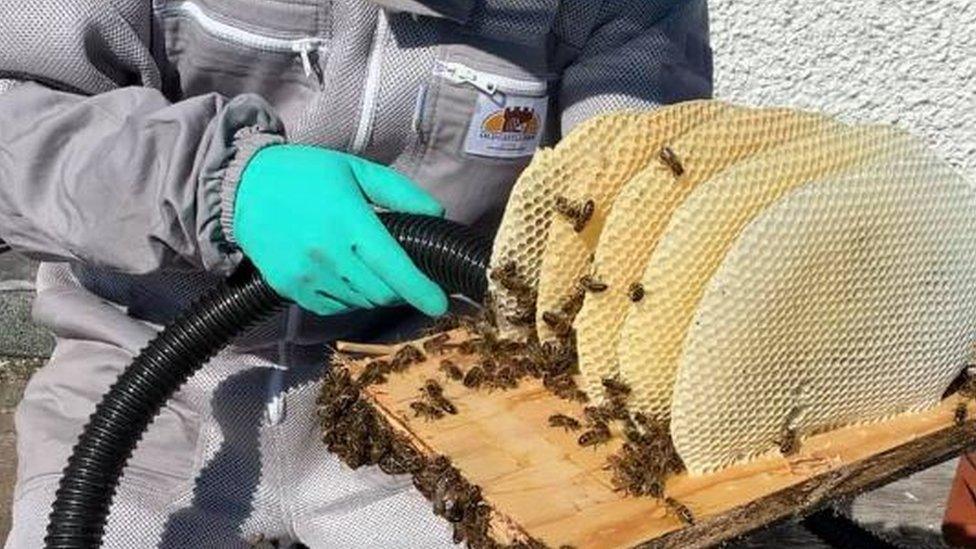
A vaccuum is used to gently remove bees and then they are placed into a box
"I'll have a hive set up and I'll open that vacuum and just empty that out in front of the hive," he said.
"The bees will smell the comb inside the hive and just basically march in. You would actually swear the ground's walking. It's quite a sight to see."
The void left by the insects is then filled with fibreglass insulation - to try to reduce future issues.
But why are they moving into houses?
Some people believe a long and cold spring followed by rising temperatures means larger swarms are now searching for new hives.
Dr Lorraine Scott from the School of Biological Sciences at Queen's University Belfast said honey bees are 99.9% domesticated, mainly living in human-managed hives and treated for diseases.
"My opinion is that we're seeing more swarming honey bees, thus nesting in houses, due to an uptake in beekeeping," she said.
"The like of the swarm that was in a chimney for over a year, that would be of huge interest to us in terms of research, because that means that colony has survived without any intervention; it can withstand a really high pathogen load."
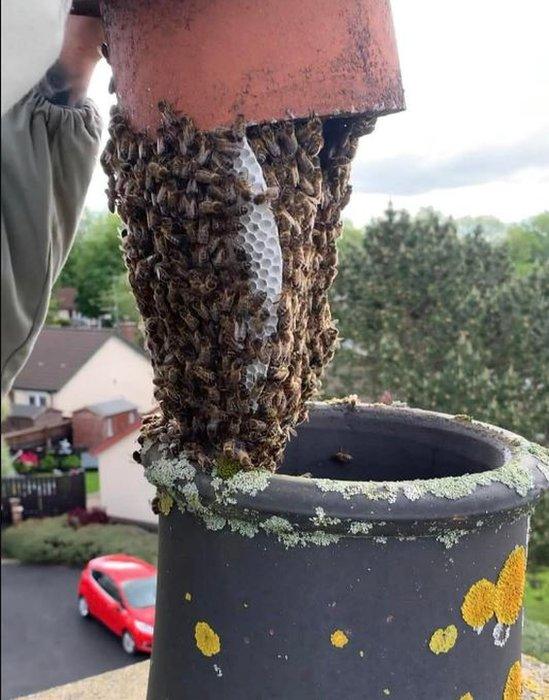
A chimney can house thousands of bees - but the process of extraction needs an expert
If a bumblebee nests in a house, she said, that is due to a "lack of nesting resources in the natural environment" as they usually favour underground nests in grassland or even an old mousehole.
"Research has shown that our native pollinators, the bumblebees, are actually doing slightly better in terms of genetic health and other sort of health indicators. They're doing slightly better in urban and suburban areas than they are in rural areas.
"And the reason for that? It could down to be down to rural pressures and pesticides and food growth and loss of hedgerows.
"Whereas in urban centres you tend to have gardens and a diversity of floral resources. Any little crevice they can find, a queen would set up a colony there."
She advises a bumblebee colony should be left alone, unless it is causing distress - in which case you should contact a conservation charity.
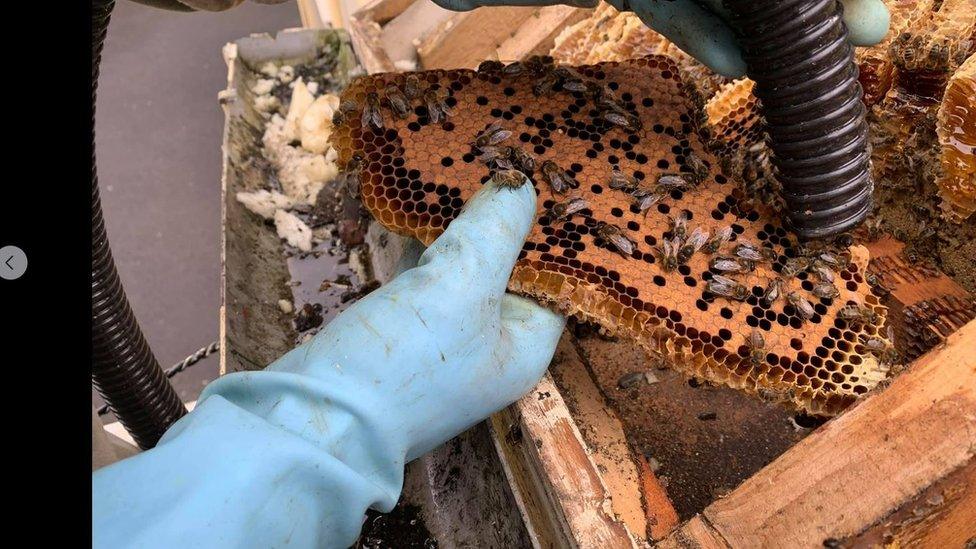
Related topics
- Published18 May 2023
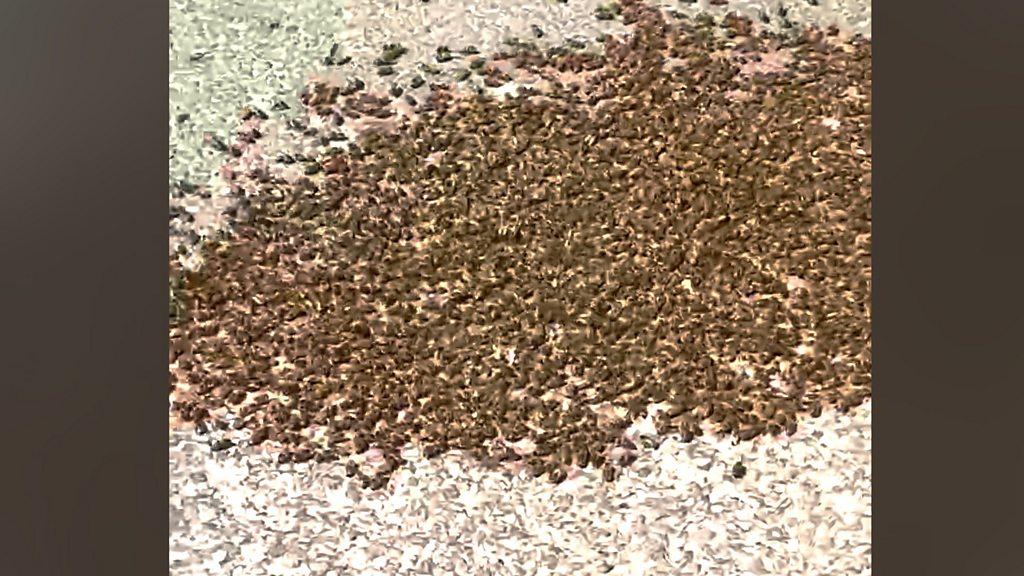
- Published29 May 2023
